
Celebrate Indigenous Peoples voices through recommended reading lists. Log your reading and activities here to earn badges.
- 6-8 Grade Book Suggestions
-
Image
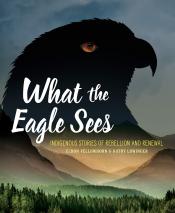
What the Eagle Sees: Indigenous Stories of Rebellion and Renewal by Eldon Yellowhorn (Grades 6-12)
This eclectic work of nonfiction shares several stories about the struggles and survival of Indigenous people across North America, primarily focusing on Canada and the United States. The text is told from an Indigenous perspective and highlights several different Nations and time periods, not necessarily in chronological order.
Image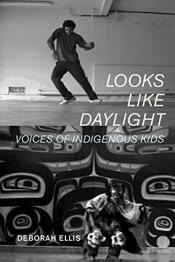
Looks Like Daylight: Voices of Indigenous Kids by Deborah Ellis (Grades 6-12)
In an invaluable, eye-opening narrative history, Ellis presents interviews with dozens of youth ages nine to 18 from among the 565 federally recognized Native tribes in the United States and 617 First Nations communities in Canada. Ellis briefly introduces historical traumas that continue to resonate, from the 1830 Indian Removal Act, attacks on Indigenous language and culture, and the forcible removal of Native children from their homes to government-sponsored, church-run industrial boarding schools.
Image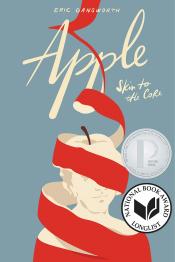
Apple: Skin to the Core by Eric Gansworth (Grades 7-12)
This bittersweet but ultimately inspiring memoir in verse chronicles Gansworth's experience raised on a reservation. Gansworth, who is an enrolled Onondaga writer and artist, was born and raised at the Tuscarora Nation. The text aims to illuminate the truth about his family history and the trauma that shaped Gansworth's life.
Image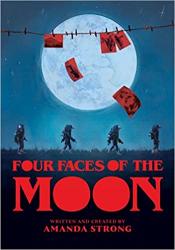
Four Faces of the Moon by Amanda Strong (Grades 7-12)
Spotted Fawn is a photographer, and through her lens readers learn more about her Métis, Cree, Nakoda, and Anishinaabe backgrounds. The story retells the extermination of the buffalo between the 1860s and 1880s by the U.S. government and the devastating effects on Indigenous livelihood and land. This graphic novel deftly conveys the generational trauma endured by Spotted Fawn's family and their ultimate survival. The artwork is moving and intense, with deep shades of blue dominating.
Image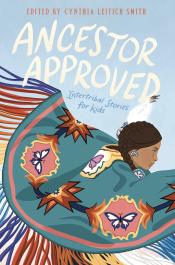
Ancestor Approved: intertribal stories for kids by Various Authors (Grades 4-6)
Editor Smith and 16 other authors and artists collaborate in this #OwnVoices short story collection from HarperCollins's HeartDrum imprint, which was created to "highlight the voices of Native creators." Each story focuses on a different character and their experience of an intertribal powwow in Michigan. The stories range from solemn to silly, but each emphasizes the power of the tribal community to support and heal its members.
Image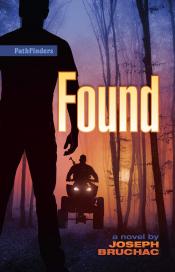
Found by Joseph Bruchac (Grades 7-9)
Nick is on his way to Camp Seven Generations to teach other Native kids survival skills when he wanders into the wrong train compartment and witnesses a murder. The murderer swiftly tosses Nick off the moving train into a wilderness area with forests and mountains, but when he sees that Nick survives, he swears to track him down and finish the job. Little does that man know, however, that Nick has learned from his ancestors how to survive in the wild, from making lean-tos and campfires to turning beech twigs into toothbrushes. But can his nature knowledge save his life when he's being tracked down by men with helicopters and guns?
Image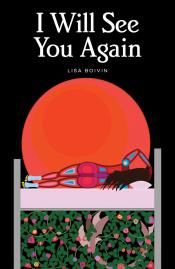
I Will See You Again by Lisa Boivin (Grades 7-9)
In an illustrated book written for older audiences, debut author Boivin writes about a young woman traveling to England to bring home the ashes of her older brother, who died suddenly and alone. In digitally created artwork, stylized human figures appear in brilliant hues against dark, velvety backgrounds.
Image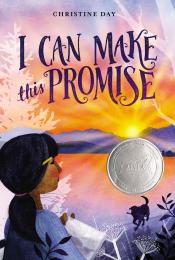
I Can Make This Promise by Christine Day (Grades 4-7)
It's summertime in Seattle for 12-year-old Edie, and between animating a short film with her best friends and adjusting to new braces, she is keeping busy. Nothing could have prepared her for a discovery in her parents' attic: a box full of photographs and letters belonging to a woman named Edith Graham, someone whose likeness is uncannily similar to Edie's. Edie always knew her mother was both Native American and adopted, but who was Edith Graham?
Image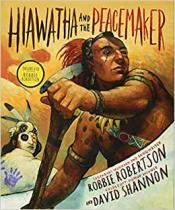
Hiawatha and the Peacemaker by Robbie Robertson (Grades 5-12)
This long overdue and stunningly illustrated work tells the story of Hiawatha, the legendary historical figure who helped form the Great Iroquois Nation. Sparked by fear, anger, and revenge, the five Haudenosaunee Nations are constantly at odds with one another other, fueled by the evil Chief Tadodaho. The Mohawk warrior Hiawatha is consumed by grief and anger, but a Peacemaker appears and enlists him to assist in joining the tribes together under the Great Law. After traveling with the Peacemaker to the different tribes and working toward peace, Hiawatha finds forgiveness within himself.
Image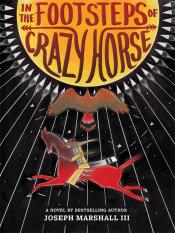
In the Footsteps of Crazy Horse by Joseph Marshall (Grades 4-8)
Eleven-year-old Jimmy McClean lives on the Rosebud Sioux Indian Reservation in South Dakota. Unfortunately, though he is three-quarters Lakota and only one-quarter white, he has light brown hair and blue eyes for which he is mercilessly teased at school by two bullies. His life changes, however, when his grandfather, Nyles High Eagle, takes him on a visionary journey in which they visit sites important to the life of the great Indian leader Crazy Horse. At each stop, Grandfather brings history to dramatic life with his stories, and, in time, Jimmy learns much about his heritage and the meaning of courage.
Image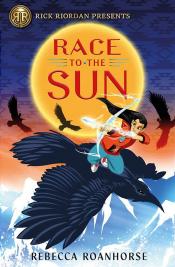
Race to the Sun by Rebecca Roanhorse (Grades 5-7)
Seventh-grader Nizhoni can see monsters—a power, she learns, inherited from her long-lost monster-slayer mother. After her father receives a too-good-to-be-true job offer from Mr. Charles, the head of an evil, pipeline-laying corporation, Nizhoni discovers that Mr. Charle's is a shape-shifting monster in disguise, intent on kidnapping her brother and using his water-bending powers to help with a nefarious fracking scheme. To defeat Mr. Charles, Nizhoni embarks on a quest for weapons, and readers will follow her through Diné (or Navajo) legend, into the Glittering World in search of Spider Woman, across the four sacred mountains, and through the Rainbow Road, to the House of the Sun.
Image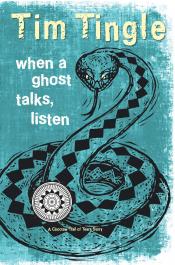
When a Ghost Talks, Listen by Tim Tingle (Grades 7-9)
Ten-year-old Isaac, now a ghost, continues to follow his people as they walk the Choctaw Trail of Tears headed to Indian Territory in what will one day become Oklahoma. There have been surprises aplenty on their trek, but now Isaac and his three Choctaw comrades learn they can time travel. The foursome heads back in time to 1824 and Washington, D.C., to bear witness for Choctaw Chief Pushmataha who has come to the nation’s capital at the invitation of his dear friend Andrew Jackson not knowing a deadly trap has been laid.
Image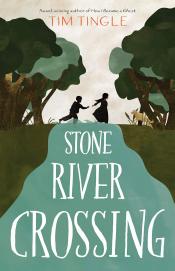
Stone River Crossing by Tim Tingle (Grades 5-8)
On one side of Mississippi's Bok Chitto River is the plantation where Lil Mo and his family are enslaved. On the other is a settlement whose residents are members of the Choctaw Nation. After a Choctaw girl, Martha Tom, shows Lil Mo an underwater stone bridge, Lil Mo and his family are able to escape when his mother is about to be sold away. The story that follows is a potent mix of history, folkways, and friendship, often wrapped in a gossamer web of magic realism. Tingle, a member of the Choctaw Nation, draws on the group's own stories to spin a tale that begins slowly but builds and twists, until the tension and intensity will have readers at the edge of their chairs.
Image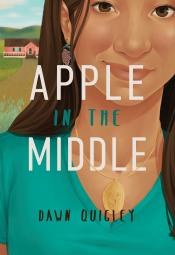
Apple in the Middle by Dawn Quigley (Grades 6-12)
This coming-of-age debut tackles what it means to belong. Apple is quirky, blurts things out to classmates, pretends to be a foreign exchange student, and feels responsible for her mother's death. She is Native, living with her nonindigenous family. Her dad and stepmom decide to send her to Turtle Mountain Chippewa Reservation to stay with her grandparents, strangers to her, over the summer. Apple's cousin Junior becomes her protector, and her cousin Nezzie, her first best friend. Apple is threatened by Karl, a man who knew her mother growing up and does not think she is "Indian" enough.
Image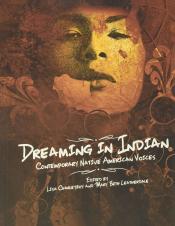
Dreaming in Indian: contemporary Native American voices by Various Authors (Grades 6-12)
his dynamic, creative work is an interactive portal that introduces readers to the lives of 64 indigenous Native American young people. The writers include an award-winning throat singer, a fashion model, a hip-hop dancer, a tribal leader, an activist, a graphic designer, a comic book creator, a chef, a dancer, a musician, a makeup artist, and a rapper, and the contributors communicate powerfully who they are in their own words and images. The visuals are a blend of bold, contemporary digital graffiti and indigenous art at its best, and the end result is a collage of profound, sometimes gritty photos and digital images. The text is a combination of awe-inspiring poetry, prose, and poignant captions. No topic is left untouched—identity, racism, gender, bullying, abuse at boarding schools, adoption, mixed heritage, runaways, suicide, drug, poverty, coming of age, death, and sex, though the tone is positive and success stories are emphasized.
Image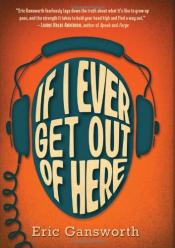
If I Ever Get Out of Here by Eric Gansworth (Grades 6-9)
Lewis Blake is bright and scrawny and the only kid from the Tuscarora Reservation tracked with the brainiacs at their county junior high in upstate New York. For the duration of sixth grade, he was invisible, but when burly, polite George Haddonfield arrives on the Air Force base and shows up in their seventh-grade class, Lewis might have found a friend. The boys bond over girls and music (the Beatles, Paul McCartney and Wings, and Queen—it is the 1970s, after all), slowly letting their guards down, but when a vicious, well-connected bully sets his sights on Lewis, their friendship is sorely tested.
Image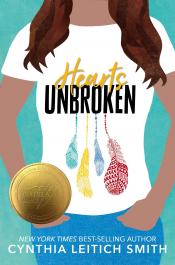
Hearts Unbroken by Cynthia Leitich Smith (Grades 7-12)
An aspiring journalist navigates friendship, first love, and racial politics in this absorbing novel. Louise Wolfe regrets dumping her first real boyfriend via email instead of face-to-face, but his offensive remarks about Native Americans crossed a line for this proud Muscogee (Creek) teen. As senior year begins, she's focused on helping her little brother, Hughie, adjust to high school life, and on earning her desired beat on the school newspaper. Competing against and falling for Joey, a new kid with a passion for photojournalism, is an added bonus. But when Hughie finds himself at the center of a divisive community conflict centered on the casting of the school production of the Wizard of Oz, Louise struggles to balance her responsibilities as a journalist with a desire to protect her family.
Image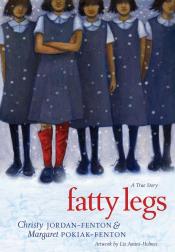
Fatty Legs by Christy Jordan-Fenton (Grades 4-8)
This is a powerful and moving autobiographical account, set in the 1940s, of one headstrong girl from an Inuvialuit community in the Arctic Circle. Margaret desperately wished to attend one of the church-run schools that had been established in a town that was accessible only in the summer months. Her desire to learn the magic of reading was greater than her fear of the unknown or leaving her family and familiar way of life, and so her parents reluctantly agreed to allow her to attend for a year, which unexpectedly turned into two. At the school she was stripped of her Native identity and forced to conform in thought and comportment to the ways of the nuns and priests that ran the school. Hard labor in the gardens, laundry, cleaning, and helping in the local hospital all took their toll, but young Margaret was stubborn and clever, managing to find ways to stay strong and true to herself.
- 9-12 Grade Book Suggestions
-
Image
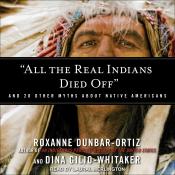
All the Real Indians Died Off (And 20 Other Myths About Native Americans) by Roxanne Dunbar-Ortiz & Dina Gilio-Whitaker (Grades 9-12)
This book will be a wake-up call to those who are confident that they understand the Native American experience. Dunbar-Ortiz (An Indigenous People's History of the United States) and journalist Gilio-Whitaker (Indian Country Today Media Network) present a no-holds barred, confrontational discussion of historical misrepresentations, cultural misunderstandings, and racial myths faced by today's Native Americans. Among the presumptions addressed and dissected are that modern tribal peoples are wards of the state, all of whom take advantage of government welfare or are rich from casinos; that sports mascots honor them; that the U.S. government gave them reservations and did not have a policy of genocide; and that native peoples were killed or died a long time ago.
Image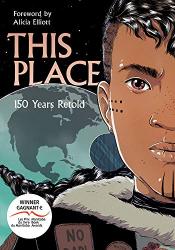
This Place: 150 Years Retold (Grades 9-12)
Explore the past 150 years through the eyes of Indigenous creators in this groundbreaking graphic novel anthology. Beautifully illustrated, these stories are an emotional and enlightening journey through Indigenous wonderworks, psychic battles, and time travel. See how Indigenous peoples have survived a post-apocalyptic world since Contact.
Image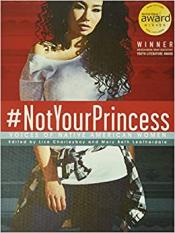
#NotYourPrincess: Voices of Native American Women (Grades 10-12)
Being an Indigenous woman in modern America is a social position that often comes with a complex sense of self. Charleyboy provides a self-described "love letter to all young indigenous women" that targets pervasive stereotypes and holds up several amazing role models of success and confidence. Along with fellow editor Leatherdale, with whom she also collaborated on Dreaming in Indian (2014), Charleyboy offers a thoughtfully curated collection of poems, visual art, personal memories, and informative articles. Together, they identify commonalities among women of different Indigenous tribes and create a complete picture of the challenges that they face. The book includes examples of an array of occupations and experiences from professional athletes to social reformers and politicians that readers have likely never heard of.
Image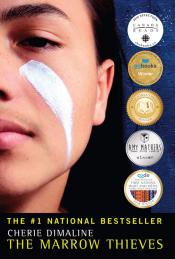
The Marrow Thieves by Cherie Dimaline (Grades 8-12)
In a dystopian future, a young Métis boy, Frenchie, comes of age while fleeing capture. Along with a group of Indigenous young people and their leader, Miig, they resist the constant threat of being harvested for their dream-carrying bone marrow. Growing up on the run, Frenchie learns how to hunt, trap, and keep moving north to survive, but climate change has caused chaos and collapse around the world. The group must escape the Recruiters, who cause loved ones to disappear forever, and adapt to harsh conditions.
Image
What the Eagle Sees: Indigenous Stories of Rebellion and Renewal by Eldon Yellowhorn (Grades 6-12)
This eclectic work of nonfiction shares several stories about the struggles and survival of Indigenous people across North America, primarily focusing on Canada and the United States. The text is told from an Indigenous perspective and highlights several different Nations and time periods, not necessarily in chronological order.
Image
Looks Like Daylight: Voices of Indigenous Kids by Deborah Ellis (Grades 6-12)
In an invaluable, eye-opening narrative history, Ellis presents interviews with dozens of youth ages nine to 18 from among the 565 federally recognized Native tribes in the United States and 617 First Nations communities in Canada. Ellis briefly introduces historical traumas that continue to resonate, from the 1830 Indian Removal Act, attacks on Indigenous language and culture, and the forcible removal of Native children from their homes to government-sponsored, church-run industrial boarding schools.
Image
Apple: Skin to the Core by Eric Gansworth (Grades 7-12)
This bittersweet but ultimately inspiring memoir in verse chronicles Gansworth's experience raised on a reservation. Gansworth, who is an enrolled Onondaga writer and artist, was born and raised at the Tuscarora Nation. The text aims to illuminate the truth about his family history and the trauma that shaped Gansworth's life.
Image
Four Faces of the Moon by Amanda Strong (Grades 7-12)
Spotted Fawn is a photographer, and through her lens readers learn more about her Métis, Cree, Nakoda, and Anishinaabe backgrounds. The story retells the extermination of the buffalo between the 1860s and 1880s by the U.S. government and the devastating effects on Indigenous livelihood and land. This graphic novel deftly conveys the generational trauma endured by Spotted Fawn's family and their ultimate survival. The artwork is moving and intense, with deep shades of blue dominating.
Image
Found by Joseph Bruchac (Grades 7-9)
Nick is on his way to Camp Seven Generations to teach other Native kids survival skills when he wanders into the wrong train compartment and witnesses a murder. The murderer swiftly tosses Nick off the moving train into a wilderness area with forests and mountains, but when he sees that Nick survives, he swears to track him down and finish the job. Little does that man know, however, that Nick has learned from his ancestors how to survive in the wild, from making lean-tos and campfires to turning beech twigs into toothbrushes. But can his nature knowledge save his life when he's being tracked down by men with helicopters and guns?
Image
I Will See You Again by Lisa Boivin (Grades 7-9)
In an illustrated book written for older audiences, debut author Boivin writes about a young woman traveling to England to bring home the ashes of her older brother, who died suddenly and alone. In digitally created artwork, stylized human figures appear in brilliant hues against dark, velvety backgrounds.
Image
Hiawatha and the Peacemaker by Robbie Robertson (Grades 5-12)
This long overdue and stunningly illustrated work tells the story of Hiawatha, the legendary historical figure who helped form the Great Iroquois Nation. Sparked by fear, anger, and revenge, the five Haudenosaunee Nations are constantly at odds with one another other, fueled by the evil Chief Tadodaho. The Mohawk warrior Hiawatha is consumed by grief and anger, but a Peacemaker appears and enlists him to assist in joining the tribes together under the Great Law. After traveling with the Peacemaker to the different tribes and working toward peace, Hiawatha finds forgiveness within himself.
Image
When a Ghost Talks, Listen by Tim Tingle (Grades 7-9)
Ten-year-old Isaac, now a ghost, continues to follow his people as they walk the Choctaw Trail of Tears headed to Indian Territory in what will one day become Oklahoma. There have been surprises aplenty on their trek, but now Isaac and his three Choctaw comrades learn they can time travel. The foursome heads back in time to 1824 and Washington, D.C., to bear witness for Choctaw Chief Pushmataha who has come to the nation’s capital at the invitation of his dear friend Andrew Jackson not knowing a deadly trap has been laid.
Image
Apple in the Middle by Dawn Quigley (Grades 6-12)
This coming-of-age debut tackles what it means to belong. Apple is quirky, blurts things out to classmates, pretends to be a foreign exchange student, and feels responsible for her mother's death. She is Native, living with her nonindigenous family. Her dad and stepmom decide to send her to Turtle Mountain Chippewa Reservation to stay with her grandparents, strangers to her, over the summer. Apple's cousin Junior becomes her protector, and her cousin Nezzie, her first best friend. Apple is threatened by Karl, a man who knew her mother growing up and does not think she is "Indian" enough.
Image
Dreaming in Indian: contemporary Native American voices by Various Authors (Grades 6-12)
This dynamic, creative work is an interactive portal that introduces readers to the lives of 64 indigenous Native American young people. The writers include an award-winning throat singer, a fashion model, a hip-hop dancer, a tribal leader, an activist, a graphic designer, a comic book creator, a chef, a dancer, a musician, a makeup artist, and a rapper, and the contributors communicate powerfully who they are in their own words and images. The visuals are a blend of bold, contemporary digital graffiti and indigenous art at its best, and the end result is a collage of profound, sometimes gritty photos and digital images. The text is a combination of awe-inspiring poetry, prose, and poignant captions. No topic is left untouched—identity, racism, gender, bullying, abuse at boarding schools, adoption, mixed heritage, runaways, suicide, drug, poverty, coming of age, death, and sex, though the tone is positive and success stories are emphasized.
Image
If I Ever Get Out of Here by Eric Gansworth (Grades 6-9)
Lewis Blake is bright and scrawny and the only kid from the Tuscarora Reservation tracked with the brainiacs at their county junior high in upstate New York. For the duration of sixth grade, he was invisible, but when burly, polite George Haddonfield arrives on the Air Force base and shows up in their seventh-grade class, Lewis might have found a friend. The boys bond over girls and music (the Beatles, Paul McCartney and Wings, and Queen—it is the 1970s, after all), slowly letting their guards down, but when a vicious, well-connected bully sets his sights on Lewis, their friendship is sorely tested.
Image
Hearts Unbroken by Cynthia Leitich Smith (Grades 7-12)
An aspiring journalist navigates friendship, first love, and racial politics in this absorbing novel. Louise Wolfe regrets dumping her first real boyfriend via email instead of face-to-face, but his offensive remarks about Native Americans crossed a line for this proud Muscogee (Creek) teen. As senior year begins, she's focused on helping her little brother, Hughie, adjust to high school life, and on earning her desired beat on the school newspaper. Competing against and falling for Joey, a new kid with a passion for photojournalism, is an added bonus. But when Hughie finds himself at the center of a divisive community conflict centered on the casting of the school production of the Wizard of Oz, Louise struggles to balance her responsibilities as a journalist with a desire to protect her family.
Return to main Celebrating Indigenous Voices Beanstack Challenge page.
Descriptions adapted from the publisher.